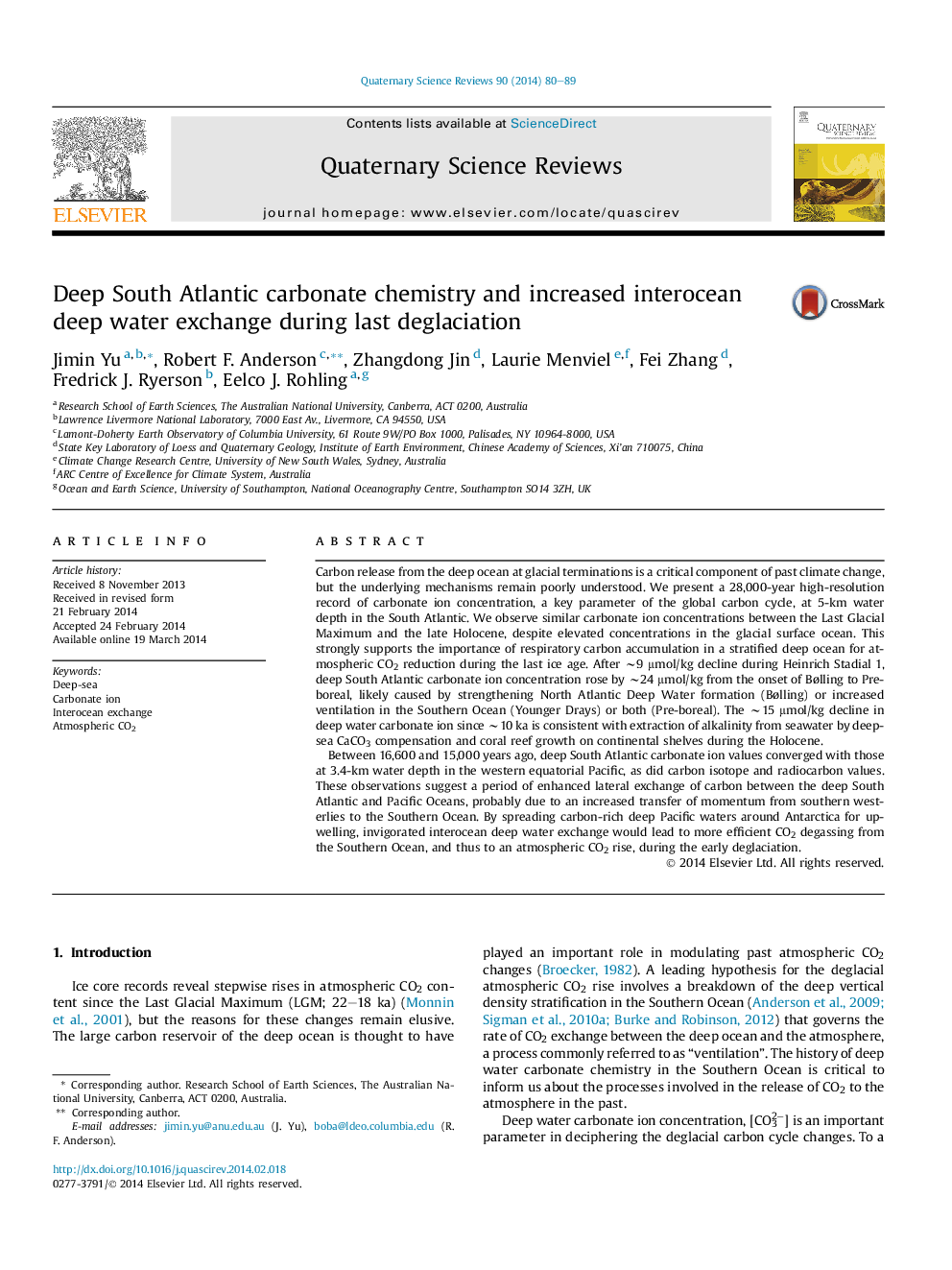| کد مقاله | کد نشریه | سال انتشار | مقاله انگلیسی | نسخه تمام متن |
|---|---|---|---|---|
| 4736549 | 1640844 | 2014 | 10 صفحه PDF | دانلود رایگان |
• New high-resolution [CO32−] for the deep S Atlantic during 0–28 ka.
• Similar deep water [CO32−] between late Holocene and LGM.
• Deep water [CO32−] decreased, while δ13C rose during HS1.
• Interocean carbon exchange enhanced during HS1.
• Large [CO32−] decline occurred since 10 ka.
Carbon release from the deep ocean at glacial terminations is a critical component of past climate change, but the underlying mechanisms remain poorly understood. We present a 28,000-year high-resolution record of carbonate ion concentration, a key parameter of the global carbon cycle, at 5-km water depth in the South Atlantic. We observe similar carbonate ion concentrations between the Last Glacial Maximum and the late Holocene, despite elevated concentrations in the glacial surface ocean. This strongly supports the importance of respiratory carbon accumulation in a stratified deep ocean for atmospheric CO2 reduction during the last ice age. After ∼9 μmol/kg decline during Heinrich Stadial 1, deep South Atlantic carbonate ion concentration rose by ∼24 μmol/kg from the onset of Bølling to Pre-boreal, likely caused by strengthening North Atlantic Deep Water formation (Bølling) or increased ventilation in the Southern Ocean (Younger Drays) or both (Pre-boreal). The ∼15 μmol/kg decline in deep water carbonate ion since ∼10 ka is consistent with extraction of alkalinity from seawater by deep-sea CaCO3 compensation and coral reef growth on continental shelves during the Holocene.Between 16,600 and 15,000 years ago, deep South Atlantic carbonate ion values converged with those at 3.4-km water depth in the western equatorial Pacific, as did carbon isotope and radiocarbon values. These observations suggest a period of enhanced lateral exchange of carbon between the deep South Atlantic and Pacific Oceans, probably due to an increased transfer of momentum from southern westerlies to the Southern Ocean. By spreading carbon-rich deep Pacific waters around Antarctica for upwelling, invigorated interocean deep water exchange would lead to more efficient CO2 degassing from the Southern Ocean, and thus to an atmospheric CO2 rise, during the early deglaciation.
Journal: Quaternary Science Reviews - Volume 90, 15 April 2014, Pages 80–89
